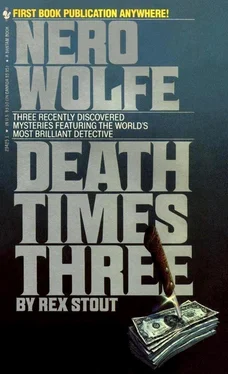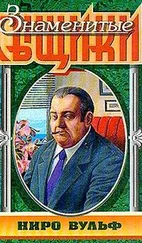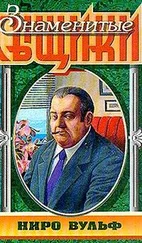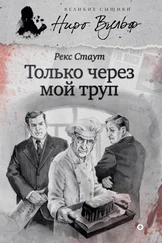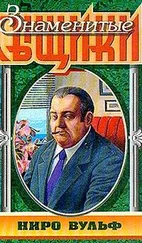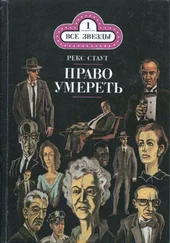A perusal of the two versions of “Counterfeit for Murder” shows that Hattie Annis’s reappearance is so thoroughly desirable that it completely justifies Rex Stout’s repudiating his folly in snuffing out a character that was endowed with her remarkable vitality. But was that the actual reason for his decision? We can only conjecture because, on July 11, 1972, when I asked Rex why he had rewritten this story, he said, “There must be a reason, but I have forgotten what it was.” We know, at least, that Rex was not acting on the advice of anyone else, either editor or friend, because, in the twenty-three-day interval that elapsed between his completing the original and beginning the rewrite, he had shown the manuscript to no one. He arrived at the decision entirely on his own. Only one possible explanation can be offered. In that interval Rex had spent a fishing holiday, at Paradise Island, Florida, with his friend Nathaniel Selleck (the second of the three Nathaniel Sellecks who were Rex’s physicians successively over a forty-five-year period). On the day that Rex returned from Florida, word reached him that Dr. Selleck had dropped dead moments after his departure. On receipt of the news Rex resumed writing at once, perhaps, in the creative act of calling back to life someone who had died, resorting to a form of therapy mysterious to some but not at all mysterious to those who write.
Hattie Annis is the most successful of several characters Rex based on his mother’s sister, Alice Todhunter Bradley, who as a young woman, in the 1880s, traveled through the West alone, lecturing, serving as schoolmistress to Brigham Young’s kin and, eventually, as a confidante to Eugene Debs. In the original “Counterfeit for Murder” Hattie does not meet Nero Wolfe. In the rewrite she not only meets him, she flabbergasts him by asking him for “lamb kidneys bourguignonne ” when he invites her to lunch. This scene alone justifies the rewrite. Rarely is Nero Wolfe ever put out of countenance by anyone. By story’s end Wolfe is won over by Hattie’s homely candor and integrity. No mistake about it, Hattie is a straight-arrow.
If it is incumbent on us to ask what else readers gain in the rewrite of “Counterfeit for Murder,” the question can at least be speedily answered. Wolfe is given more to do here. Once again he is able to utilize, to good advantage, the services of Saul, Fred, and Orrie, and to stage one of his revealing assemblies. We also learn the source of the counterfeit bills, a detail skimped on in the original story. And, finally, Wolfe is able to compromise severely the dignity of Albert Leach (that his surname recalls a parasite is not accidental), a T-man whose patronizing attitude has awakened his indignation. This scene foreshadows Wolfe’s brilliant coup in humbling J. Edgar Hoover, six years later, in The Doorbell Rang .
We need not suppose that the rewrite of “Counterfeit for Murder” cannibalized the original, stripping from it its most meritorious parts. Tamaris Baxter, who changes roles with Hattie in the rewrite, to become the needed corpse, is intelligent and resourceful but a bit starchy, probably because she is not the person she pretends to be. To dispense with her is no hardship. But the original story has several wonderful scenes that can ill be spared. The restoration of them to a place in the corpus is a gain that all discriminating Neronians will applaud. Early in the story tensions run high between Wolfe and Archie. Archie comes upon Wolfe studying a terrestrial globe, “probably picking out a place for me to be exiled in.” Wolfe fires Archie, and Archie reports, “I turned and marched out, chin up, with my ego patting me on the back, and mounted the stairs to my room.” It is a joy to see Wolfe later weasel out of this commitment when he realizes he needs Archie after all.
Midway in the story we are treated to two superb scenes, one treading close on the heels of the other. Albert Leach, accompanied by a team of four other T-men, invades the brownstone and conducts an inch-by-inch search, even to sifting through the files in Wolfe’s office and the osmundine in his plant rooms. “ ‘My house has been invaded, my privacy has been outraged, and my belongings have been pawed,’ ” Wolfe declares. He locks himself in his bedroom and refuses to emerge until the T-men are gone. Unfortunately, for himself, Inspector Cramer chooses this disagreeable hour — it is eleven-thirty at night — to call, and Wolfe, with unprecedented vigor, uses his physical bulk to block his entrance, in what surely is one of the great moments of the saga.
Archie’s witty sallies and disclosures, as usual, are sprinkled through the story and add to its zest. It is intriguing to learn that he once spent nine rainy hours in a doorway on a stakeout. At one point he tells us, too, “I no longer had any illusions about dimples. The most attractive and best-placed ones I had ever seen were on the cheeks of a woman who had fed arsenic to three husbands in a row.” The invasion of the brownstone by the T-men sparks some of his most audacious quips. He asks one of them, “ ‘Did you find the snow in the secret drawer?’ ” And he also asks the man to turn his mattress because it’s due for a turning. He explains further that FBI stands for “Foiled By Intelligence.” We cannot pass from the subject of Archie without noting one curious detail attaching to the original manuscript. Archie’s crucial maneuver of leaving his hat and coat in Hattie’s parlor was, for Rex, an afterthought. He actually taped that detail over the passage it replaced. For Rex such backtracking in his manuscripts was unprecedented.
William S. Baring-Gould surmised that the events recounted in “Counterfeit for Murder” occurred on a Monday and Tuesday in the winter of 1960–1961. He was wrong. Rex’s notes show that they occurred in 1959, on Monday, January 26, and Tuesday, January 27. These dates, used in the original, were retained in the rewrite.
The year in which Rex wrote his two versions of “Counterfeit for Murder” was, for him, an annus mirabilis. He wrote three stories in 1958 and three again in 1960. In 1959 he worked on five. “Eeny Meeny Murder Mo,” was finished in January. Between January and March he produced his two versions of “Counterfeit for Murder.” Plot It Yourself was begun in May and finished in July. “The Rodeo Murder” was begun in September and finished in October. A suggestion that he wrote “Counterfeit for Murder” twice because he was unsure of himself can have no validity. Rex was far from being written out. Indeed, he would write another seventeen Nero Wolfe stories, eleven of them novels, before he racked up his quill at eighty-nine. That he could do a second version of “Counterfeit for Murder” and come within ten lines of making it exactly the same length as its predecessor bespeaks a virtuosity that confirms that his mastery over his material was unimpaired.
While Rex was writing “Counterfeit for Murder,” his grandsons, Chris and Reed Maroc, aged three and five, were living at High Meadow. When their mother, Rex’s daughter Barbara, told them not to bother their grandfather because he was “busy with a counterfeiting plot,” they took this literally and invaded Rex’s study to confront him with drawn, toy pistols. “They had a point,” Rex conceded. “It could be argued that all fiction writing is counterfeiting.” When “The Counterfeiter’s Knife” was published in The Saturday Evening Post , the boys, clad in, respectively, Superman outfit and western gear, restaged their stickup for a photograph to accompany the story. This, Rex explained, did not make them liable to charges of false arrest. “A reconstruction,” he said, “is no good as evidence.” As encountered in this volume, Rex’s own reconstructions, however, are excellent evidence of the fecundity of his genius.
Читать дальше
